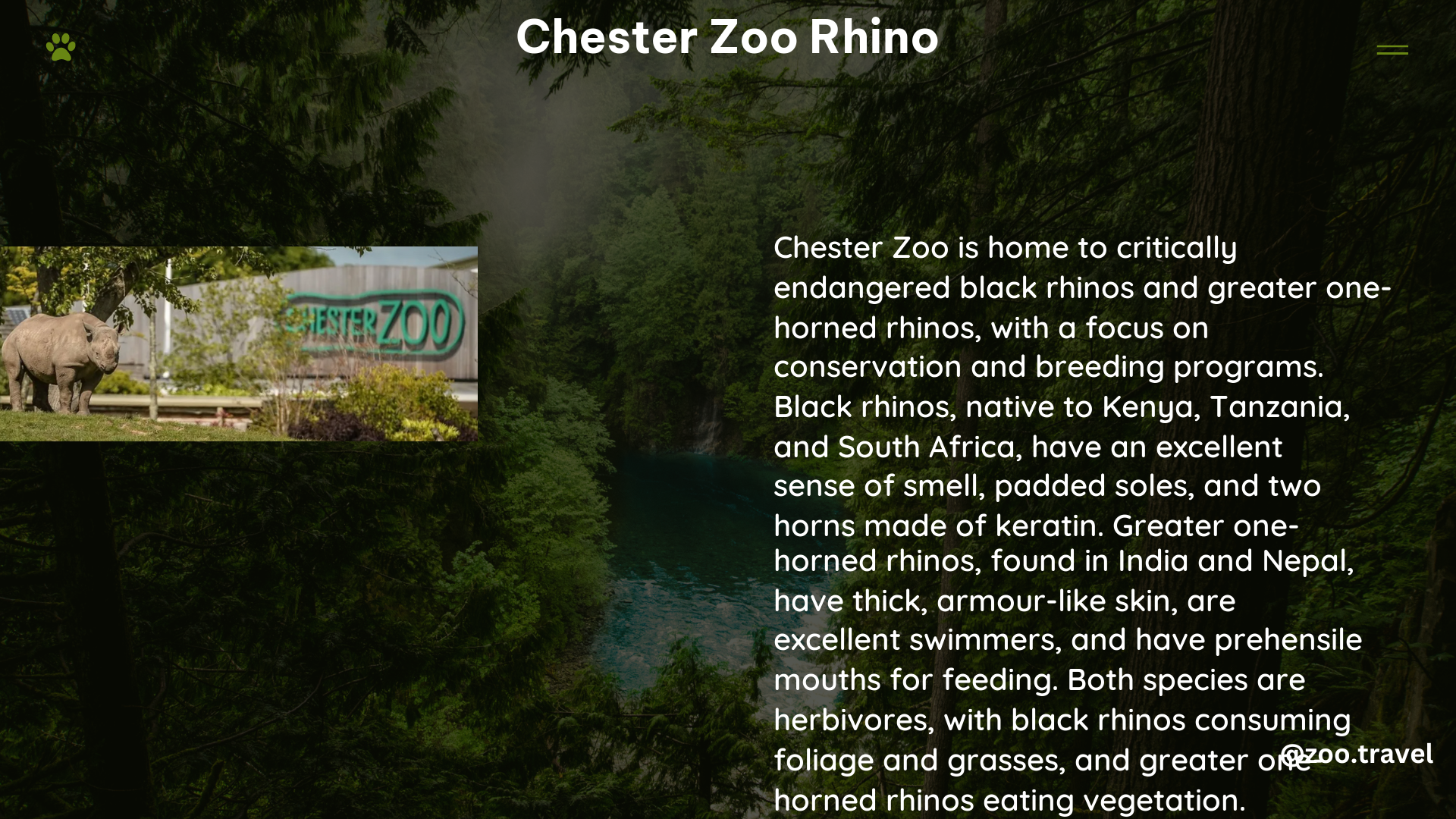Chester Zoo is home to two critically endangered species of rhinos: the Eastern black rhino and the Greater one-horned rhino. This guide provides a detailed overview of these magnificent creatures, their habitats, behaviors, and the conservation efforts being made to protect them.
Eastern Black Rhino at Chester Zoo
The Eastern black rhino (Diceros bicornis) is a critically endangered species with fewer than 600 individuals remaining in the wild. Chester Zoo is proud to be home to these majestic animals, which can be found in the wooded grasslands, savannahs, and deserts of Kenya, Tanzania, and Rwanda.
Distinctive Features
- Two horns made from keratin
- Thick, armour-like skin
- Excellent sense of smell
Diet and Behavior
Eastern black rhinos are herbivores (folivores) that feed on a variety of twigs, shrubs, small trees, and other foliage. They are known for their solitary nature and can be quite territorial.
Conservation Status
Poaching for their horns and habitat loss have led to the Eastern black rhino’s vulnerability to extinction. Chester Zoo is actively involved in conservation efforts, collaborating with organizations like the Wildlife Trust of India and Save the Rhino International to protect this species.
Greater One-horned Rhino at Chester Zoo

The Greater one-horned rhino (Rhinoceros unicornis) is a vulnerable species with around 3,000 individuals remaining in the wild. Chester Zoo is proud to be home to these impressive creatures, which can be found in the tall grasslands, adjacent swamps, and riverine forests at the foothills of the Himalayan mountains in India and Nepal.
Distinctive Features
- A single horn made from keratin
- Thick, armour-like skin
- Prehensile mouth parts
Diet and Behavior
Like the Eastern black rhino, the Greater one-horned rhino is a herbivore (folivore) that feeds on a variety of twigs, shrubs, small trees, and other foliage. They are known for their social nature and can often be seen in small groups.
Conservation Status
Habitat loss and poaching for their horns pose significant threats to the survival of the Greater one-horned rhino. Chester Zoo is committed to supporting conservation efforts and has recently welcomed a female calf, Jiya, born to mother Asha in October 2022.
Chester Zoo’s Rhino Births
In recent years, Chester Zoo has celebrated the births of both Eastern black and Greater one-horned rhino calves, contributing to the global efforts to prevent these species from disappearing altogether.
Eastern Black Rhino Birth
In November 2023, Chester Zoo announced the birth of a rare Eastern black rhino calf, the first daylight birth captured on camera. The calf, yet to be named, was born to mother Zuri following a 15-month gestation period.
Greater One-horned Rhino Birth
In October 2022, Chester Zoo welcomed a female Greater one-horned rhino calf, born to mother Asha after a 16-month pregnancy. The calf, named Jiya, has bonded closely with her mother and is an essential addition to the species’ conservation efforts.
Conservation Efforts at Chester Zoo
Chester Zoo is actively involved in conserving both Eastern black and Greater one-horned rhinos. They collaborate with various organizations, such as the Wildlife Trust of India and Save the Rhino International, to support threatened species and protect their habitats. The zoo’s onsite endocrinology lab plays a crucial role in tracking animal hormones and pregnancies, contributing to the prevention of extinction for many precious species.
References:
